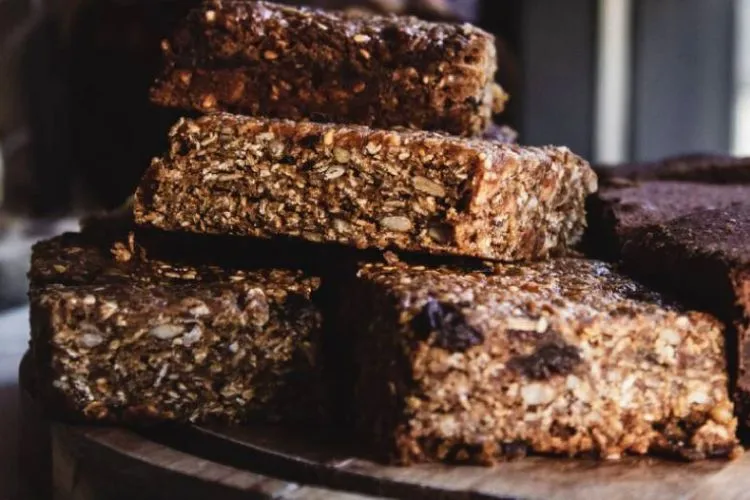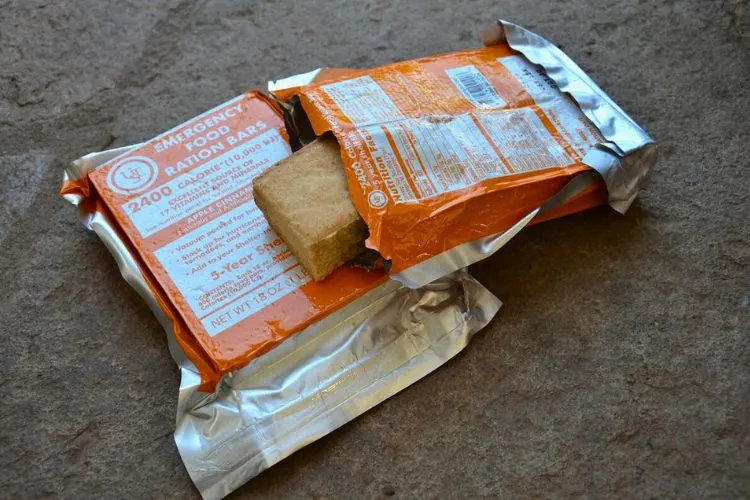As we delve into the concept of emergency preparedness, the topic of survival bars often comes up. These compact, high-energy food sources are essential for many survival kits.
But a common question arises: How long do survival bars last?
This article aims to shed light on this topic, helping consumers make informed choices.

What are Survival Bars?
Survival bars are dense, nutritious, and calorie-rich food items designed for survival situations. They provide essential nutrients and calories required to maintain energy levels in circumstances where regular meals may not be an option.
The appeal of survival bars lies in their compact size, making them easy to store and carry.
How Long Do Survival Bars Last? Typical Shelf Life of Survival Bars
The standard shelf life of most survival bars is around five years from the date of manufacture. However, this can vary based on the ingredients used and the packaging process.
It’s crucial to note that while survival bars are made to last, their shelf life can be affected by several factors, which we will explore further.
Factors Influencing the Longevity of Survival Bars
Understanding what affects the shelf life of survival bars is essential for ensuring they remain a reliable part of your emergency kit. Several critical factors come into play:

Packaging
The way survival bars are packaged plays a pivotal role in their longevity. High-quality, airtight, and vacuum-sealed packaging is preferred because it significantly reduces the exposure of the bars to air and moisture—two primary culprits in the degradation of food products.
- Seal Integrity: The integrity of the seal is paramount. Any compromise in the packaging can lead to air intrusion, which may speed up the oxidation process, leading to spoilage.
- Material Used: The packaging material also matters. Durable, puncture-resistant materials help ensure the survival bars remain sealed and protected from external elements throughout their shelf life.
Storage Conditions
Even with the best packaging, the conditions where survival bars are stored can greatly influence their shelf life.
- Temperature: It’s important to keep survival bars in a cool environment. Elevated temperatures can accelerate the breakdown of nutrients and increase the risk of spoilage.
- Humidity: Moisture is another enemy of long shelf life. High humidity can permeate packaging over time, especially if it is not perfectly sealed, leading to mold growth and spoilage of the bars.
- Light Exposure: Direct sunlight or even bright artificial light can degrade the food quality over time. It’s best to store survival bars in a dark place.
How to Extend the Shelf Life of Survival Bars?
Taking proactive steps to extend the shelf life of survival bars ensures they will be nutritious and edible when needed most. Here are ways to achieve that:

Optimal Storage Practices
By understanding the importance of storage conditions, you can take measures to create an ideal environment for your survival bars.
- Consistent Temperature: Find a storage spot in your home where the temperature remains constant and cool. Basements or cellars often provide such conditions, away from heating sources or windows.
- Control Humidity: In humid environments, consider using dehumidifiers or silica gel packs in the storage area to absorb excess moisture and protect the bars.
- Darkness is Key: Store survival bars in cabinets, drawers, or storage boxes where they are not exposed to light, preserving their quality for longer.
Repackaging Damaged Bars
Accidents happen, and packaging can get damaged. Here is what you can do in such cases:
- Airtight Containers: Transfer survival bars with compromised packaging into airtight containers. These containers can be plastic food storage boxes or even vacuum-sealed bags designed for food preservation.
- Labeling: After repackaging, label the containers with the content’s name and the original expiration date. This practice helps in keeping track of their shelf life.
- Regular Checks: Make it a habit to periodically check the integrity of both the original and any repackaged survival bars. Look for signs of damage, spoilage, or pests and take action accordingly.
By paying close attention to the packaging and storage conditions and taking proactive measures when necessary, the shelf life of survival bars can be maximized. This not only ensures you have a reliable food source in emergencies but also helps in reducing waste and saving money in the long term.
Despite the care, it’s possible for survival bars to go bad. Signs that a survival bar has spoiled include an off smell, visible mold, or changes in texture. If you notice any of these signs, it’s safer to discard the bar.
Frequently Asked Questions (FAQs)
What happens if you eat expired survival bars?
Eating expired survival bars might not always cause harm if they have been stored properly and show no signs of spoilage. However, the nutritional value might decrease over time.
Are all survival bars made the same?
No, survival bars vary greatly in ingredients, calorie content, and purpose. Some are designed for high-energy activities, while others focus on providing a balanced meal.
Can adjusting storage conditions extend the life of survival bars?
Yes, as mentioned earlier, maintaining optimal storage conditions can significantly impact the longevity of survival bars.
Conclusion:
Survival bars are an excellent resource for emergency preparedness. Understanding their shelf life and factors affecting it plays a key role in ensuring you have a reliable food source when needed.
Remember to check the expiration dates, store them properly, and be mindful of the signs indicating they might have gone bad.
With proper knowledge and care, you can make the most out of your survival bars, ensuring they’re ready when you need them the most.


